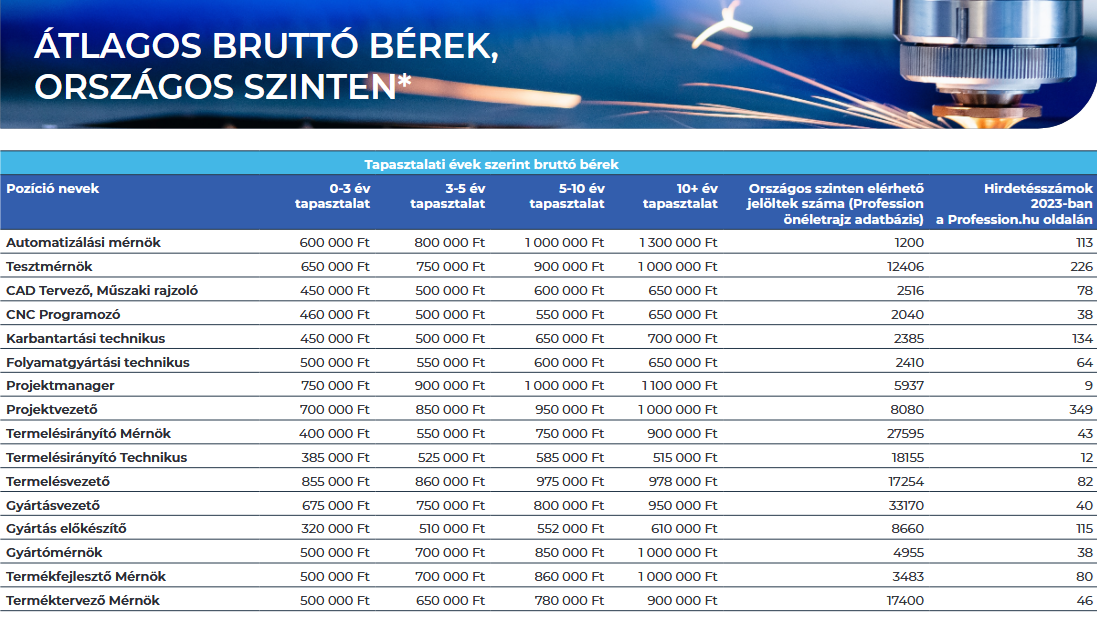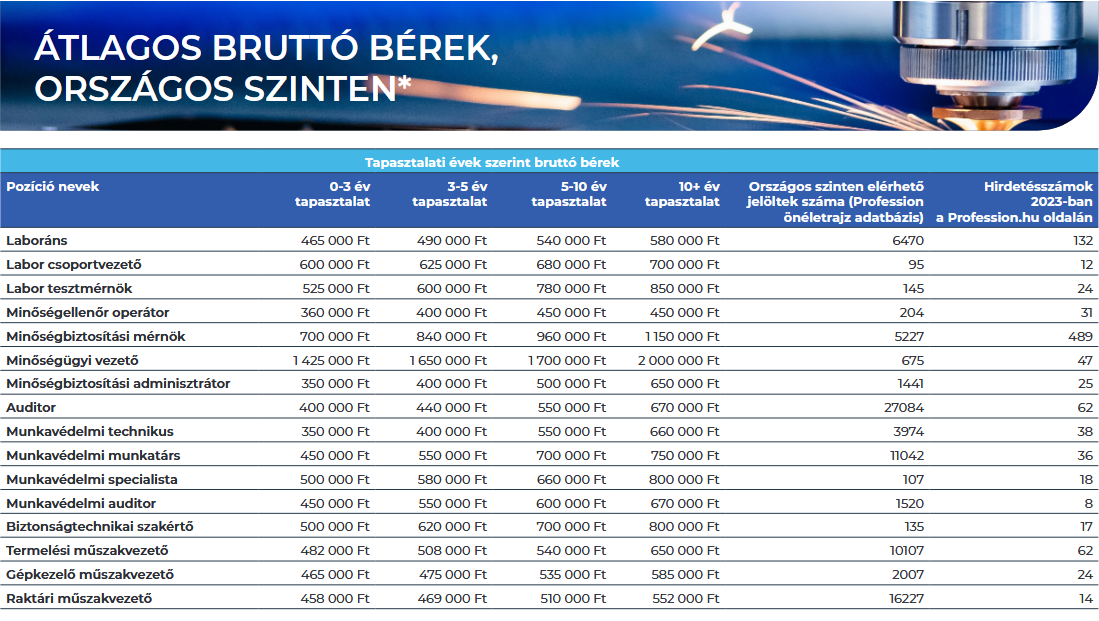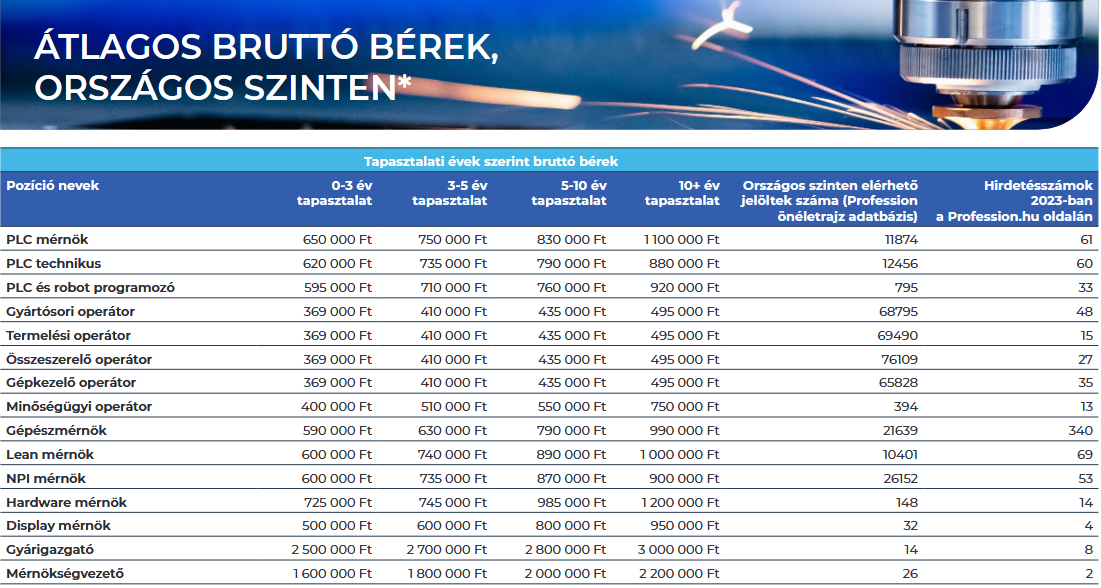The manufacturing sector is an important sector in Hungary. The country's economy relies heavily on manufacturing and industry. Various manufacturing sectors such as automotive, electronics, machinery and food industry are present in Hungary. Thus, after graduation, there is a good chance that young people will find their first job in this sector. However, it is a big challenge for them to represent themselves and their value in the labour market when it comes to wage claims. This is where the following short summary will help.
Profession Services has produced a benchmark publication on the current state of the manufacturing sector, and what is perhaps of most interest to young people, wages.
Given the current market situation, companies in the manufacturing sector are not expanding as much as in previous years, and are concentrating on retention. As a young professional, you need to be able to stand out from the crowd and represent your value in the labour market, as good professionals are still highly sought after. If we manage our wage needs consciously, we can see clearly what wage band we can move within with our knowledge and experience. This is helped by the average gross salaries calculated by Profession Services in this publication, which cover a wide range of positions at national level.
(click on the image to enlarge)
In terms of skills and abilities, if we want to stand out from the crowd, we should focus on learning foreign languages, as language skills have become much more important in the sector, even for engineers and technical workers. And in terms of specialisation, the importance of skills in artificial intelligence and robotisation has increased strongly in the manufacturing sector.
Manufacturing processes are changing, and so are the required professional skills. Manufacturers are using very sophisticated technology to meet new specific needs and reduce costs. Some examples of the areas that manufacturing companies are focusing on[1]:
Nanotechnology is creating a new era in microelectronics.
Lightweight steel, aluminium and carbon fibre make cars lighter and more fuel efficient.
Biotechnology creates more personalised medicines.
3D printing creates prototypes by combining tiny particles, rather than by casting or pressing. However, it is increasingly used to make special aircraft parts and human replacement organs.
Robots are becoming more sophisticated.
Big data is used to analyse customer trends and guide product development.
These general guidelines can help you become a prepared and successful worker in the manufacturing and production sector. Remember that continuous learning and development is key to building your career!
Source:
Profession Services benchmark kiadvány
Kimberly Amadeo (2021) Manufacturing Jobs: Examples, Types and Changes
[1] https://www.thebalancemoney.com/manufacturing-jobs-examples-types-and-changes-3305941






